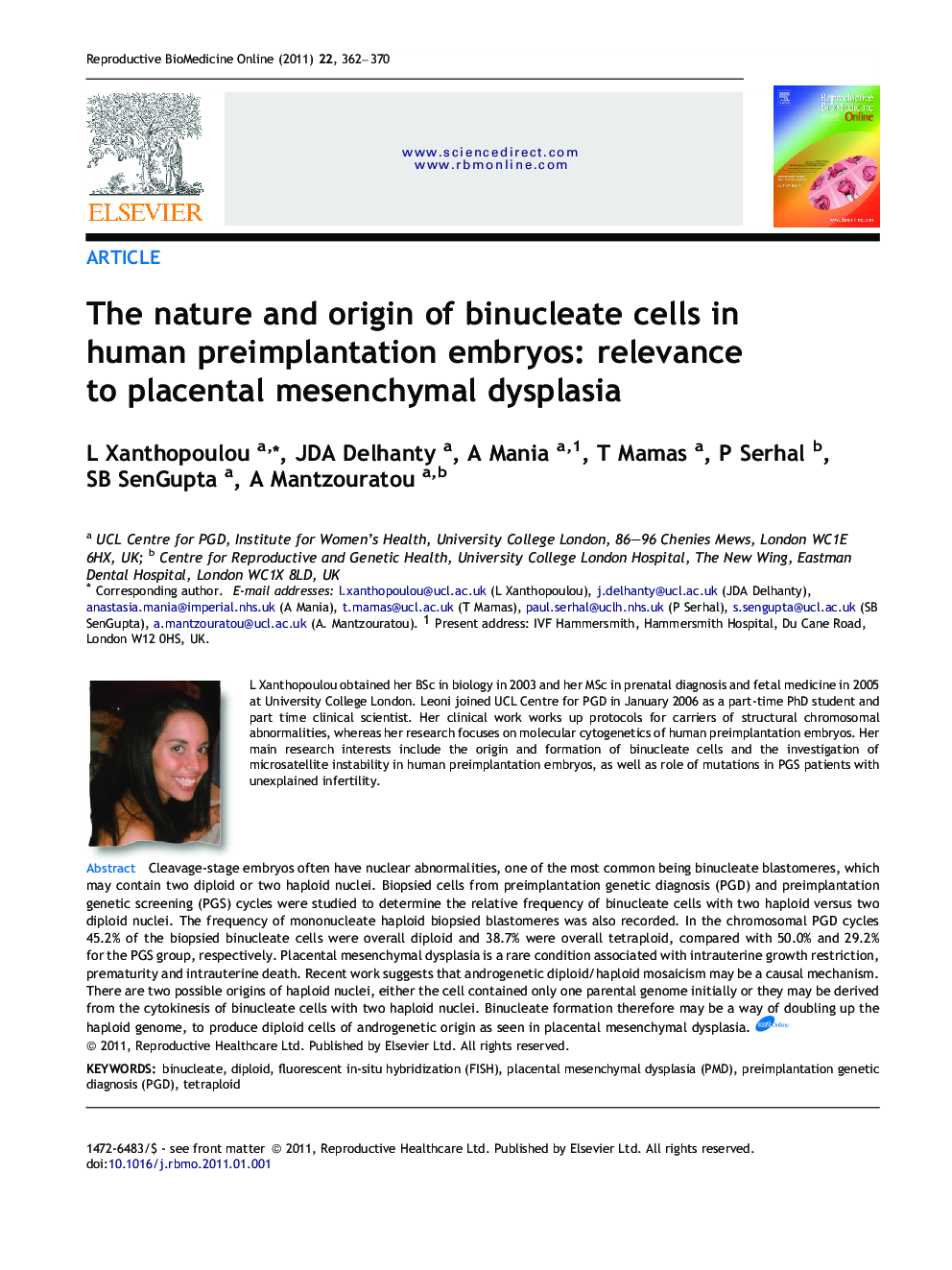| کد مقاله | کد نشریه | سال انتشار | مقاله انگلیسی | نسخه تمام متن |
|---|---|---|---|---|
| 3971729 | 1256775 | 2011 | 9 صفحه PDF | دانلود رایگان |

Cleavage-stage embryos often have nuclear abnormalities, one of the most common being binucleate blastomeres, which may contain two diploid or two haploid nuclei. Biopsied cells from preimplantation genetic diagnosis (PGD) and preimplantation genetic screening (PGS) cycles were studied to determine the relative frequency of binucleate cells with two haploid versus two diploid nuclei. The frequency of mononucleate haploid biopsied blastomeres was also recorded. In the chromosomal PGD cycles 45.2% of the biopsied binucleate cells were overall diploid and 38.7% were overall tetraploid, compared with 50.0% and 29.2% for the PGS group, respectively. Placental mesenchymal dysplasia is a rare condition associated with intrauterine growth restriction, prematurity and intrauterine death. Recent work suggests that androgenetic diploid/haploid mosaicism may be a causal mechanism. There are two possible origins of haploid nuclei, either the cell contained only one parental genome initially or they may be derived from the cytokinesis of binucleate cells with two haploid nuclei. Binucleate formation therefore may be a way of doubling up the haploid genome, to produce diploid cells of androgenetic origin as seen in placental mesenchymal dysplasia.Since the early studies in human embryos haploid cells were seen whose origin was unknown. Preimplantation embryos often have nuclear abnormalities, one of the most common being binucleate blastomeres, i.e. cells that contain two nuclei. These nuclei could be both diploid but many binucleate cells contain two haploid nuclei. Biopsied cells from preimplantation genetic diagnosis and preimplantation genetic screening cycles were studied to determine the relative frequency of binucleate cells with two haploid versus two diploid nuclei. The frequency of mononucleate haploid biopsied blastomeres was also recorded. There are two possible origins of haploid nuclei, either the cell contained only one parental genome initially or they may be derived from the cytokinesis of binucleate cells with two haploid nuclei. Binucleate formation therefore may be a way of doubling up the haploid genome, to produce diploid cells of androgenetic origin as seen in placental mesenchymal dysplasia, a rare condition associated with intrauterine growth restriction, prematurity and intrauterine death.
Journal: Reproductive BioMedicine Online - Volume 22, Issue 4, April 2011, Pages 362–370